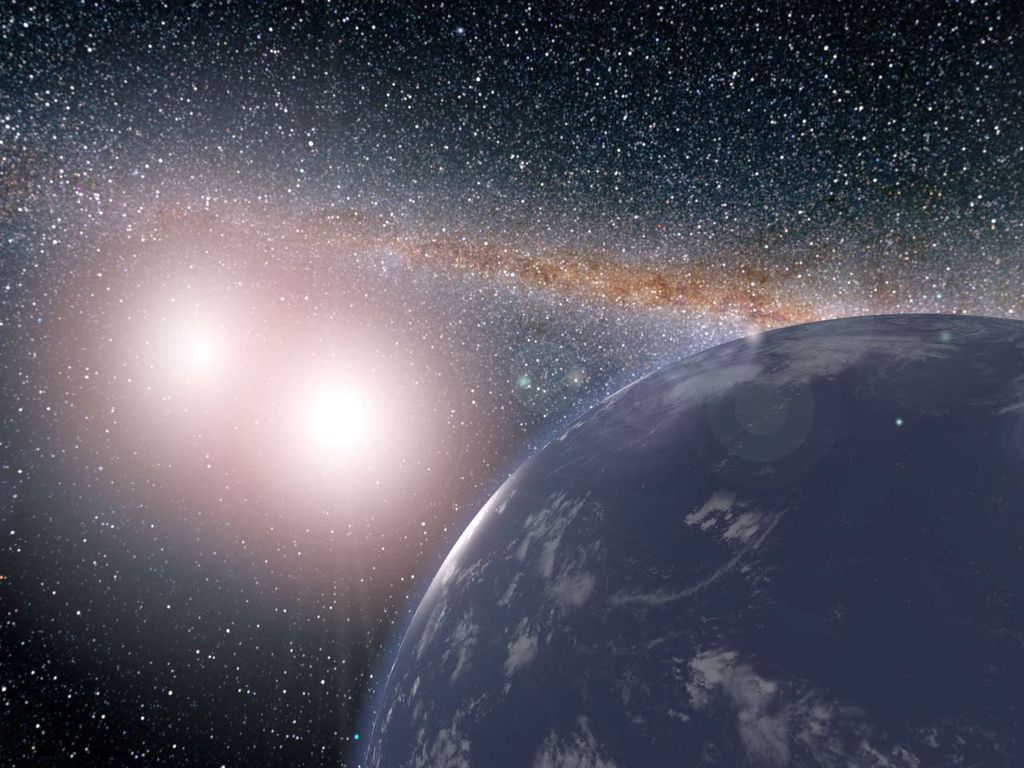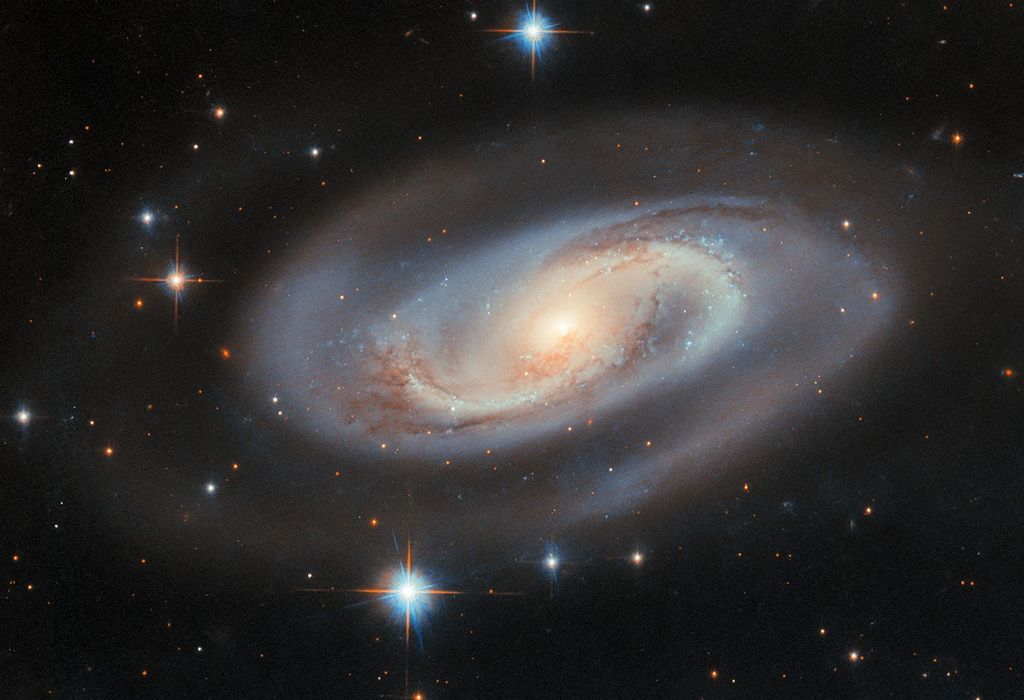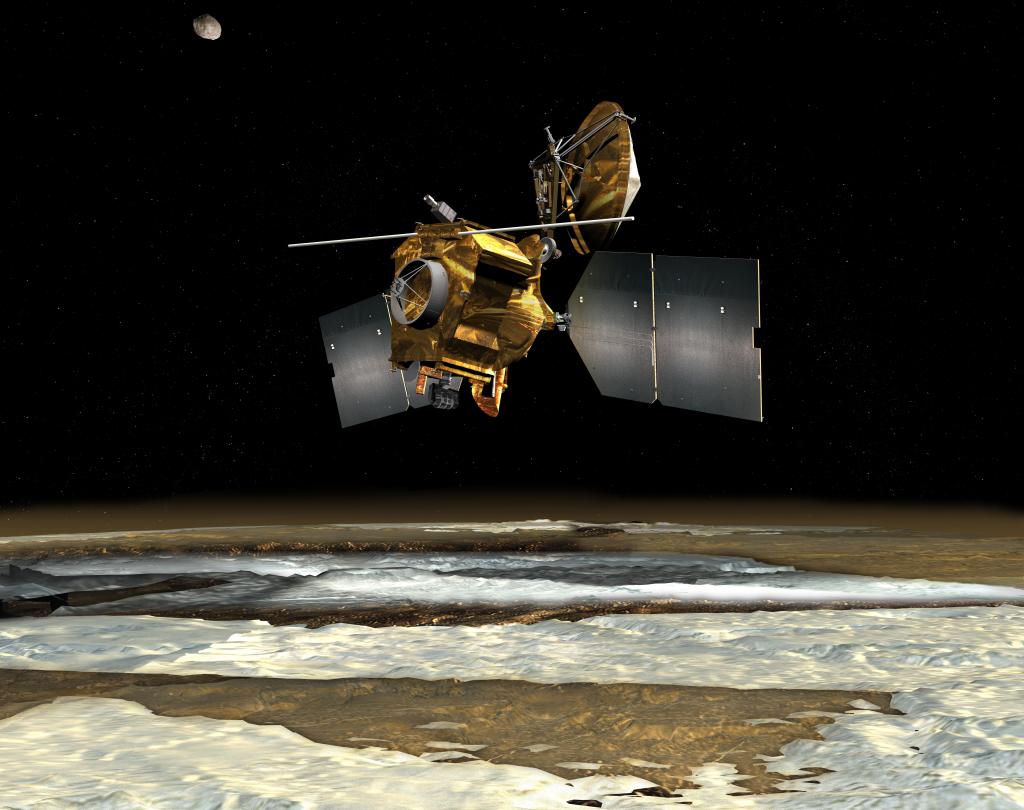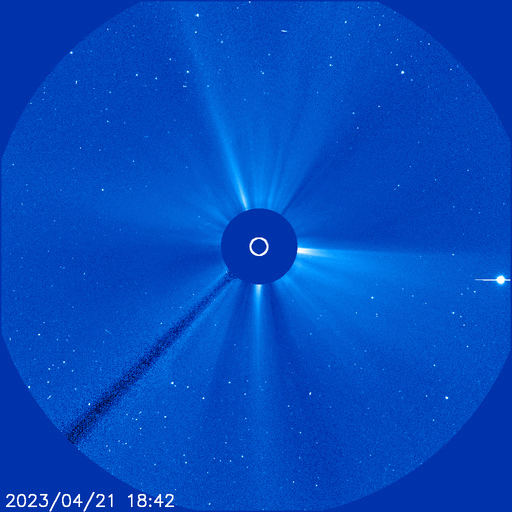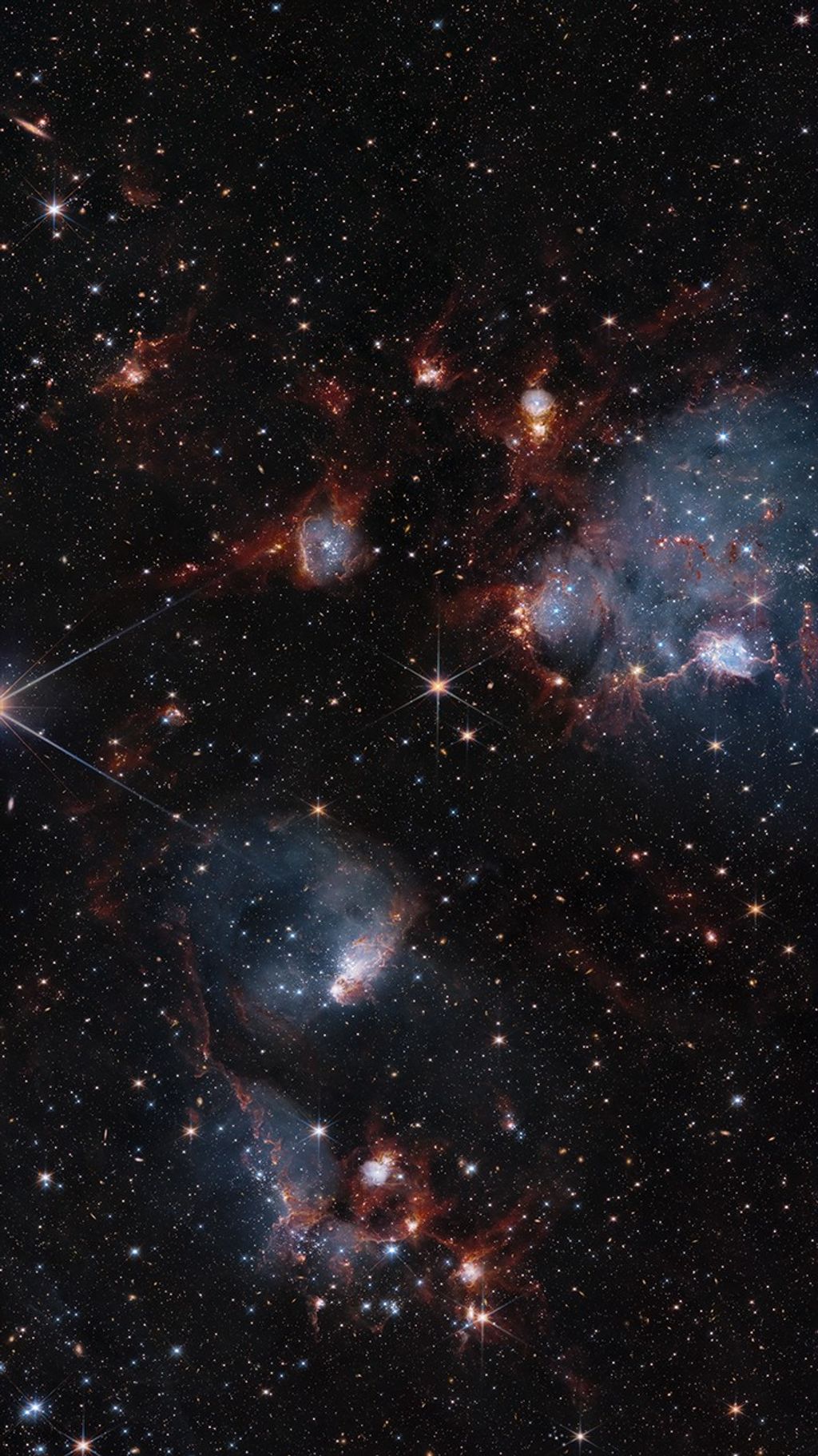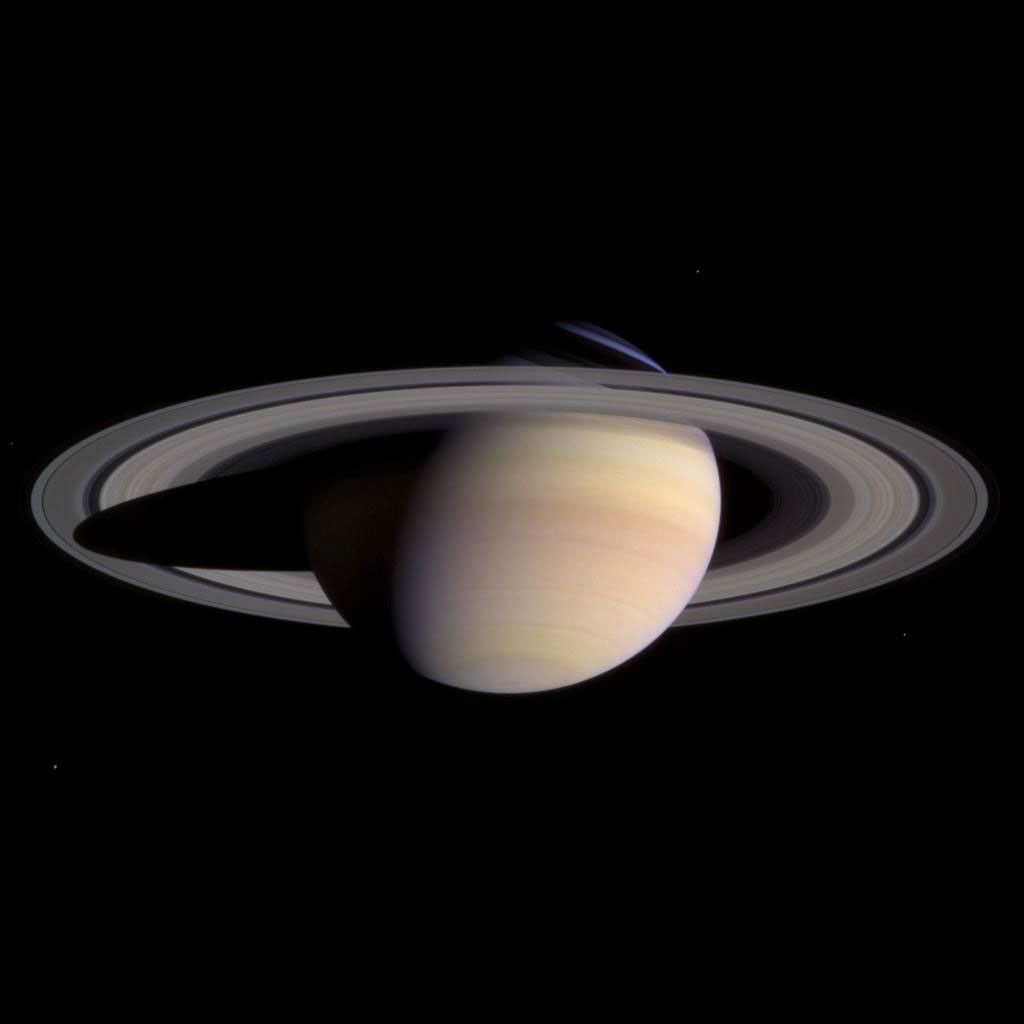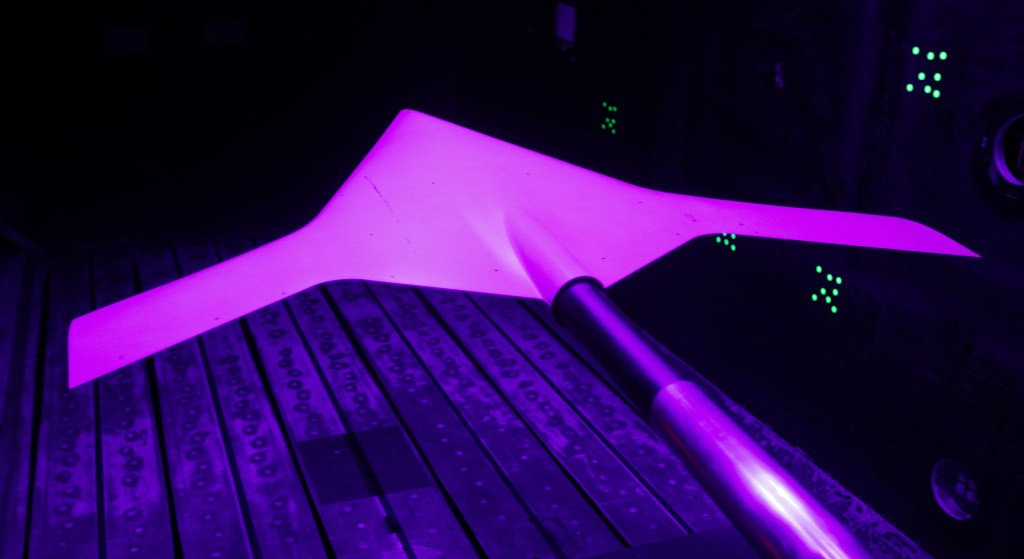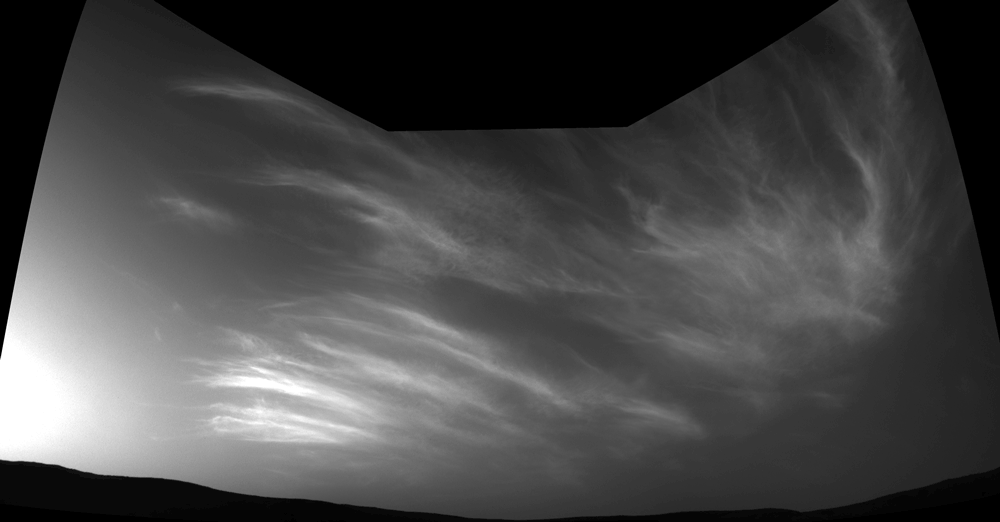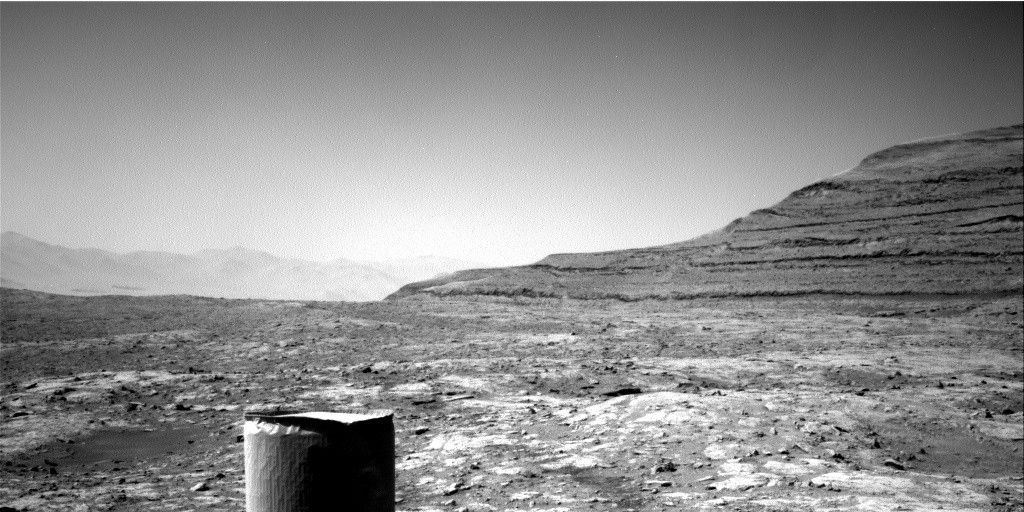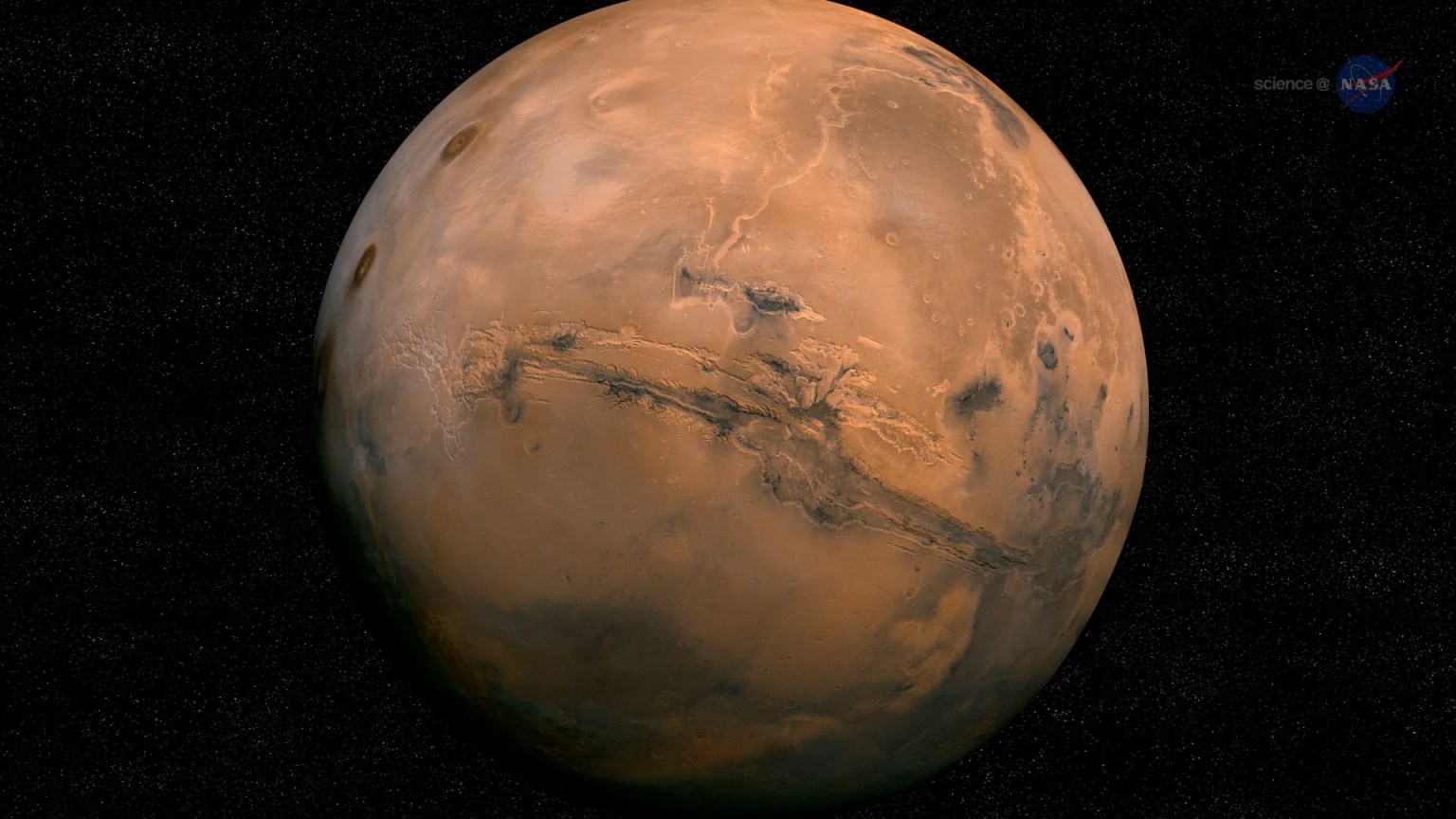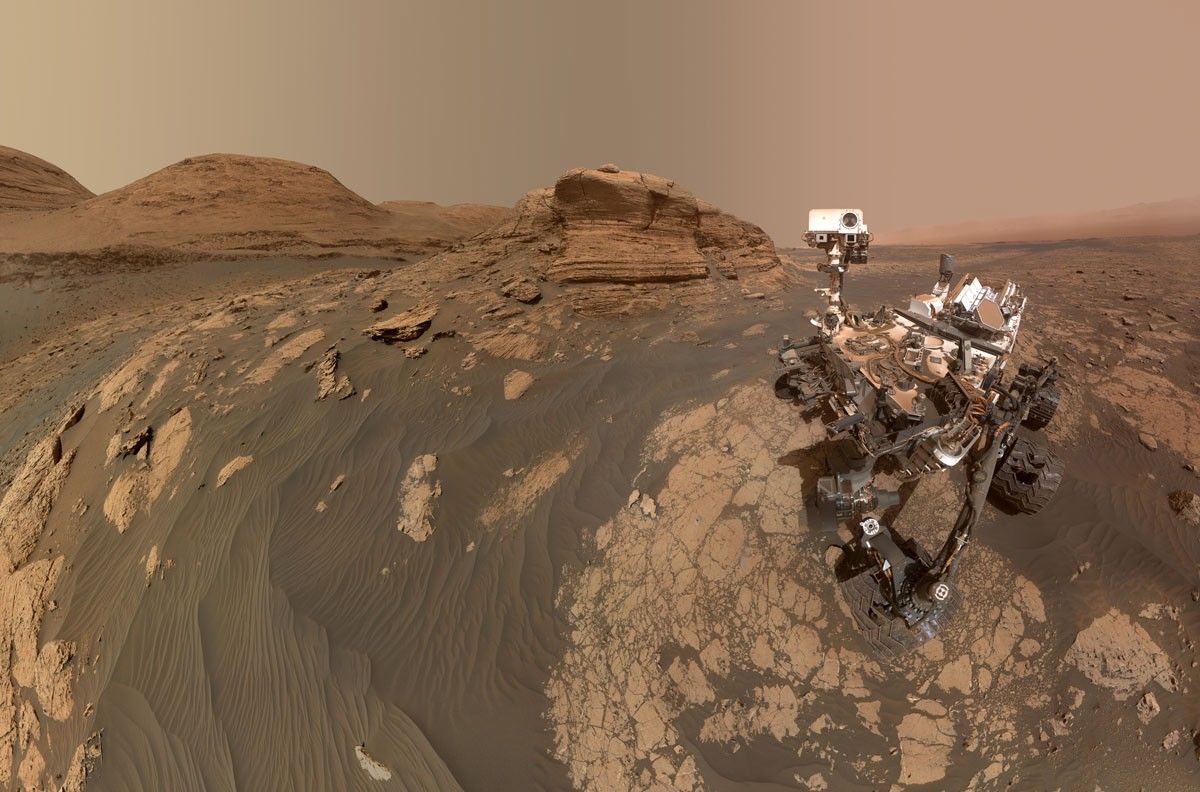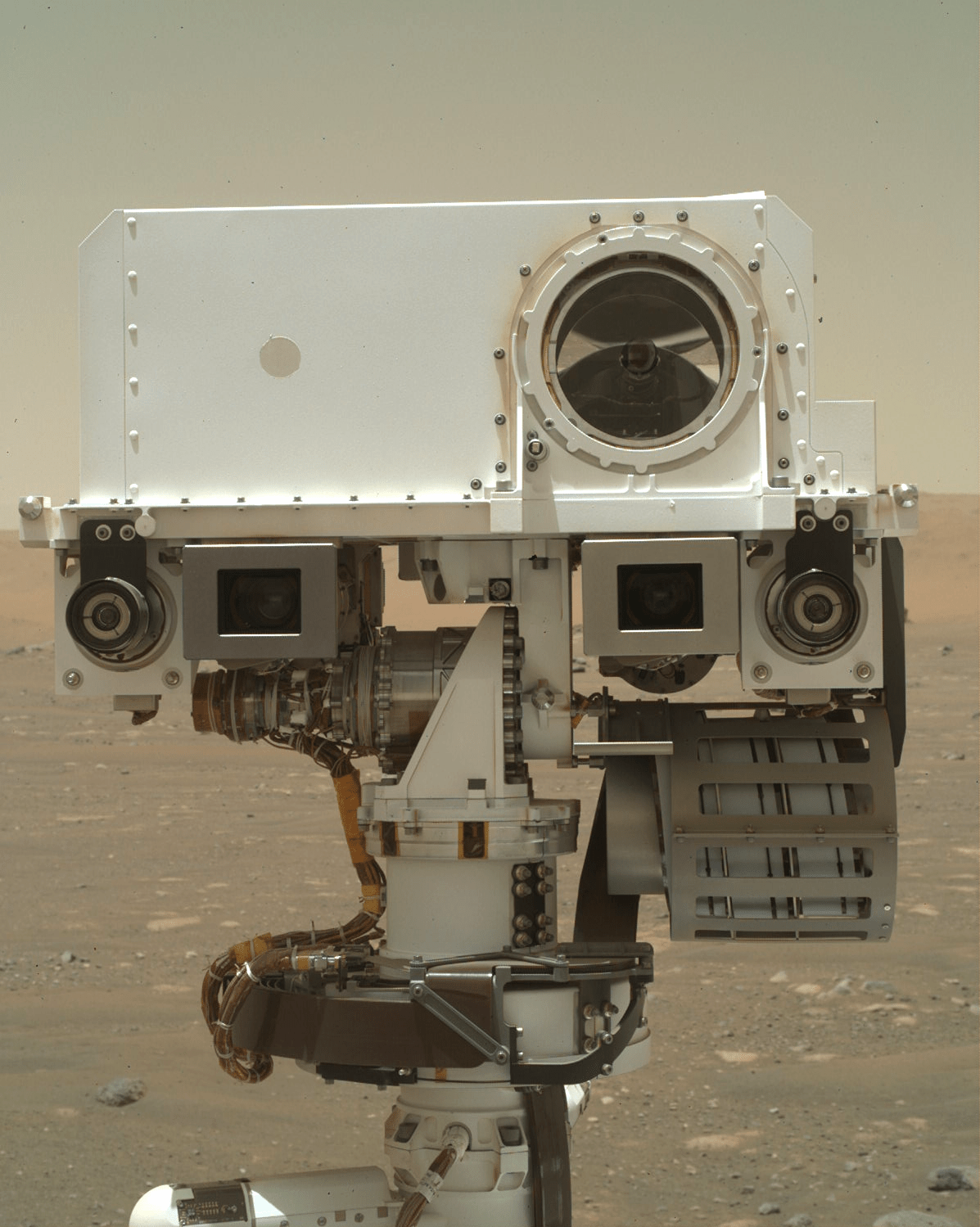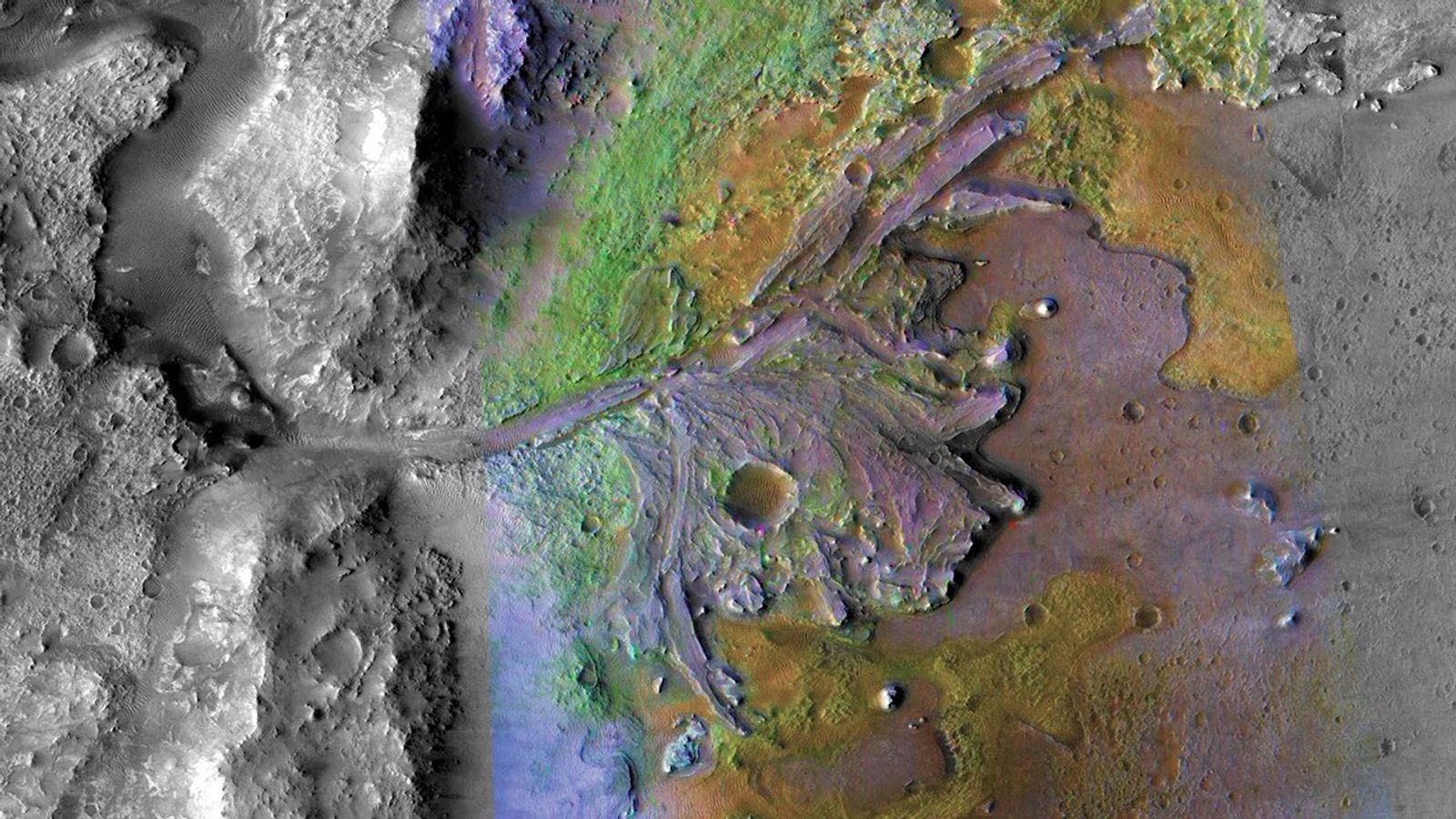Mastcam image of clouds taken at twilight on Sol 2425.
The main focus of today's plan was observations of the interbedded thick and thin layers we found at Woodland Bay before we drive away again, perhaps as early as the next plan. Primarily, this involved completing our analysis of their composition (with ChemCam and APXS) and using MAHLI to distinguish grain sizes. The team found two targets - "Tobermory" on the more resistant layer and "Mons Graupius" on the more recessive and thinly laminated layer - that were both far enough away for ChemCam targeting and close enough for APXS and MAHLI. This co-targeting meant that ChemCam could 'blow away' dust to give MAHLI a nice clear view of the grains in the actual rock itself. Another ChemCam target, "Avon," was added on what appeared to be a more resistant layer. In addition, MAHLI will be taking two mosaics: "Deeside" will provide an overview of the layers described above, while "Lochgilphead" will cover a section of the exposed outcrop that may have cross-bedding.
A ChemCam raster will also be performed on the "Crakaig" target previously analyzed by APXS, while Mastcam will take some documentation images of this, as well as three large stereo mosaics ("Olrig," "West Side" and "Morningside") to extend our image coverage of the workspace and document all the ChemCam observations from the weekend plan.
Today's plan also dealt with layers up in the atmosphere. Unlike the geology side of things, when it comes to atmospheres it's usually more important when we are than where we are, and we're headed slowly but surely for the cloudiest time of the year at low latitudes on Mars. Recent Navcam images revealed some amazing "noctilucent" clouds taken after sunset in Gale Crater, which are so high that they're still illuminated by the Sun, even when it's night at the surface and any lower cloud layers are already in shadow. A short movie is shown
. In a longer movie, the moment at which these higher clouds finally go into shadow can be used to work out the cloud altitude geometrically. Mastcam also took some fantastic images just post-sunset in the weekend plan on Sol 2425, so we added another Navcam 'twilight' cloud movie in today's plan, as well as a regular 'suprahorizon' cloud movie in the early afternoon. Over the next few weeks we expect to see more and more cloud activity, and will be watching closely to see when different cloud types start to appear at different times of day, which tells us about the amount of water vapor present, atmospheric temperature as a function of height, etc.
The plan also included standard REMS and DAN, and a 360° dust devil survey.
Written by Claire Newman, Atmospheric Scientist at Aeolis Research

